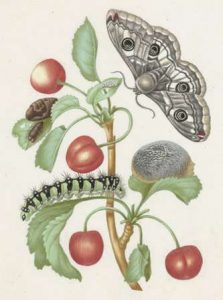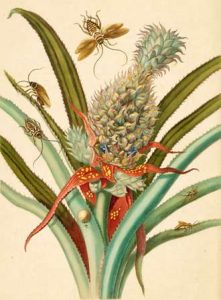Circling Back to the Question of History Podcasts
I am not a person who generally sits with my hands idle. When I watch something on the television screen, I do needlework, or color (1) or build spreadsheets about who my audience is, where they hang out on line, what they read, etc (2) Conversely, when I’m doing something that requires my hands to be busy but engages only part of my brain—cooking dinner for instance—I listen to podcasts. (3)
I’ve talked about the search for history podcasts before: you can find those discussions here, here and here. Since then I’ve added a few to the list that I’d like to bring to your attention.
The one I’m enjoying most is the What’s Her Name Podcast: two smart historians who tell the stories of forgotten, fascinating women in history in conversation with guest scholars and writers. The podcast is fast-paced, funny and thoughtful. Their Twitter feed has introduced me to a number of other women’s history podcast that I will check out once I’ve made my way through earlier episodes of the What’s Her Name Podcast: unfortunately for the speed at which I listen dinner comes but once a day and sometimes it is leftovers.
Here are a few more I’ve added to the list:
Part of History on the Net, History Unplugged has two different kinds of episodes. In some episodes the host answers a history question posed by a listener, like “What did the Vikings eat?” In other episodes, he interviews the authors of recent history books. I’ve only listened to a few episodes, but so far I’ve been engaged.
The Rogue Historian focuses on American history, particularly the Civil War and Reconstruction. As seems to be the norm these days, the host interviews other scholars, public historians, etc. (4)
Arguing History, which is part of the New Books Network, mixes things up by bringing on two historians who have dealt with different aspects of the same topic and asking them leading questions. So far my favorite is the episode titled “What Role did WWI Play in Women Gaining the Right to Vote?”
For the most part, Tides of History, like one of my other favorite history podcasts, Revolutions, features a single speaker with a scripted story following an idea through time, interspersed with an occasional interview. Tides of History looks at the rise of the nation state and the roots of the modern world. Thoughtful and thought provoking.
Several years ago I found it hard to find a history podcast that I enjoyed. Obviously that isn’t the case anymore. At the moment I have hundreds of hours of material to listen to. But I’d still like to hear your suggestions for any must listens that I’ve missed.
Now if you’ll excuse me, I’m headed downstairs to make an eggplant and olive tagine and learn a bit of history while I do it.
(1)To my surprise, I find that I can, in fact, color within the lines if I concentrate.
(2) Anything you’d like to share?
(3) I used to listen to the news, but these days that results in me screaming at talking back to the radio and occasionally throwing things.
(4) I find I like this format very much.
Butterflies, Bugs, and Maria Sibylla Merian
Once you start looking, it seems like you find examples of women who did important things in the past everywhere. Women you’ve never heard of unless you happen to be in their field of expertise—and maybe not even then.
 Take, for instance, naturalist and illustrator Maria Sibyella Merian (1647-1717). She was trained as a painter by her stepfather, who was a still-life painter. She married one of her stepfather’s apprentices. Unlike many women, she continued to paint after her marriage, producing a popular series of watercolor engravings of flowers. Her career would have been interesting enough if she had simply been a forgotten woman who made a career as an artist in the seventeenth century.
Take, for instance, naturalist and illustrator Maria Sibyella Merian (1647-1717). She was trained as a painter by her stepfather, who was a still-life painter. She married one of her stepfather’s apprentices. Unlike many women, she continued to paint after her marriage, producing a popular series of watercolor engravings of flowers. Her career would have been interesting enough if she had simply been a forgotten woman who made a career as an artist in the seventeenth century.
Flowers were a way to pay the bills. Her passion was insects. She was one of the first naturalists to observe live insects directly and the first to document the metamorphosis of the butterfly. (1) While still in her teens, she captured insects, raised them, dissected them, and drew them at various stages of their development. In 1679, she published the first volume of a ground-breaking work that depicted the transformation of caterpillars into moths and butterflies. Each plate showed an insect next to the type of plant it ate. Accompanying text described the stage of metamorphosis the drawing illustrated.
In 1692, after fourteen years of marriage, Merian left her husband. She spent a several years with her daughters and mother in a strict religious sect called the Labadists that practiced “primitive Christianity.” (2) When her religious fervor cooled, she moved the family to Amsterdam, where she and her daughters supported themselves as artists, giving art lessons to the daughters of wealthy merchants and selling watercolors of plants and butterflies.
In 1699, at the age of 52, Merian set off with her younger daughter, Dorothea Maria, on a scientific expedition to Surinam, then a possession of the Dutch West India Company. (3) For two years, the women collected and studied plants and insects in the South American jungle.
Merian had hoped to stay in Surinam for five years, but a tropical fever cut the trip short. Back in the Netherlands, Merian published the most important work of her career. The Metamorphosis of the Insects of Suriname, which included sixty plates illustrating the different stages of development of Surinam’s insects. The book brought her scientific recognition by her contemporaries. Sort of. Members of the scientific societies of seventeenth and eighteenth century Europe bought her books and discussed them, but did not invited her to join the all-male institutions that praised her work.
Today, Merian is once again recognized as a founder of the modern field of entomology.
(1) At the time, insects were popularly believed to spontaneously generate from the mud.
(2) Plain clothing, simple food in limited quantities, cold houses, communal property and a culture of reporting each other’s failings to the group.
(3) One of the first purely scientific expeditions to set out from Europe. Just to put this in context: Captain Cook led his first expedition to the Pacific in 1768 and the first French circumnavigation of the globe took place from 1766 to 1769, which also included a woman, albeit one disguised as a man, French botanist Jeanne Baret.
Heading Back to the Great River Road
In November, 2015, My Own True Love and I set out on an adventure. We headed south for a three-week trip along the Great River Road, a conglomeration of 3000 miles of local and state roads that follow the length of the Mississippi River. We started in Memphis, went south until we reached the end of the road in Louisiana, then headed back toward Chicago, stopping at whatever took our fancy. We made it as far as north as Vicksburg,(1) where we ran out of steam and the weather turned nasty. I blogged about it as we went. (If you're interested, you can find those posts in the category Road Trip Through History.)
In a few weeks we're setting out again. This time we're starting at the headwaters of the river at Lake Itasca State Park, and traveling south through Minnesota and Iowa toward Chicago. Once again, we'll stop at anyplace that catches our eye. We only have a week, so we may not even make it across the Minnesota border before we have to head home. More blog posts will ensure.
Once again, I'm asking the Marginalia for suggestions about places we should stop at, historical or simply hysterical, famous and obscure. Are there regional specialties we need to try? What little town has a great restaurant, bakery, farmer’s market, or music venue? Traveling history nerds want to know.
(1) I apparently never wrote a blog post on Vicksburg National Military Park, which is a shame because it was fascinating. I knew I left some posts unwritten, but sheesh! It may be time to dip back into those notes.


